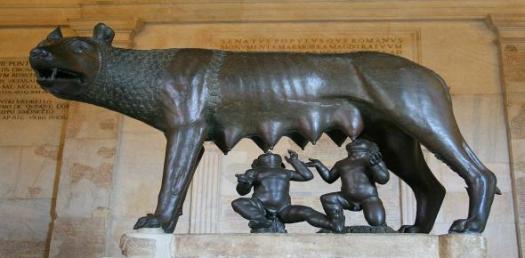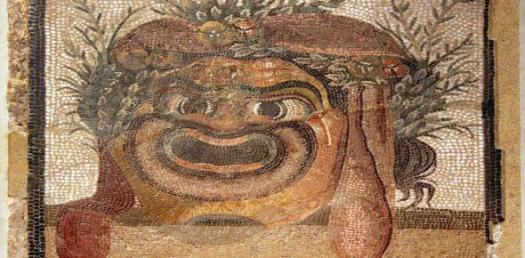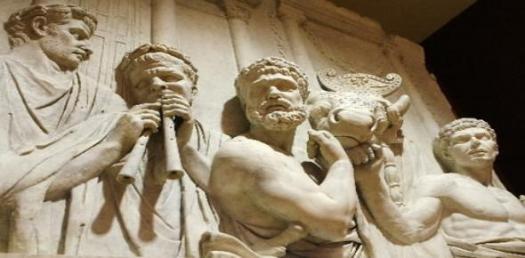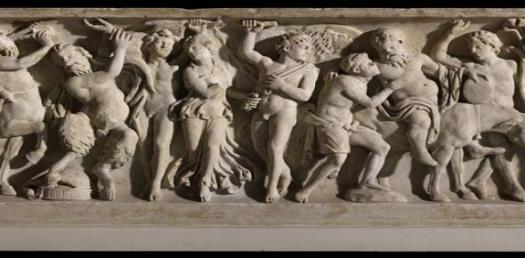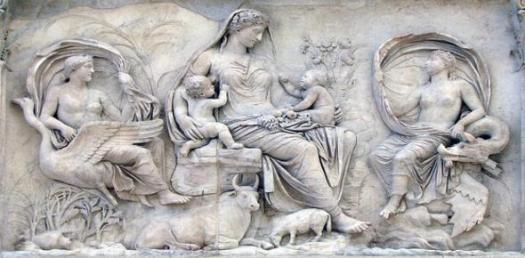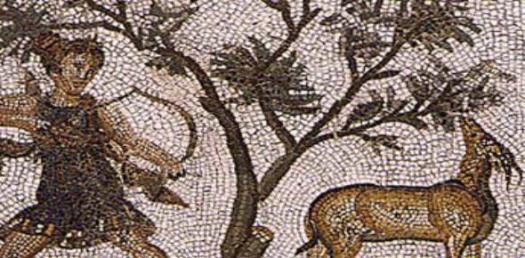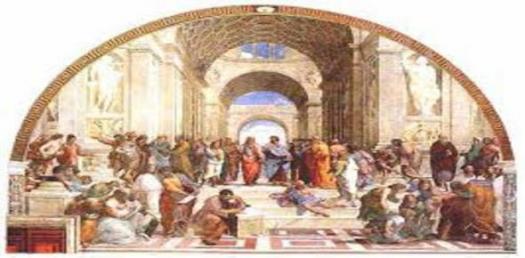The Art Of Ancient Rome Trivia Quiz

The art of ancient Rome is one of the oldest art all around the World. It is subdivided into sections in which many renowned artists have performed wonders. This effect has helped in developing of some sectors in Rome and the World at large. The artwork includes metal works, iron cravings, and lots more.
- 1.
Which of these is not an ancient Roman art?
- A.
Sculpture
- B.
Architecture
- C.
Painting
- D.
Graphics Design
Correct Answer
D. Graphics DesignExplanation
Graphics Design is not considered an ancient Roman art because it did not exist during that time period. Ancient Roman art primarily consisted of sculpture, architecture, and painting, which were highly valued and influential in their society. Graphics Design, as we know it today, emerged much later with the development of digital technology and printing techniques. Therefore, it cannot be classified as an ancient Roman art form.Rate this question:
-
- 2.
Which of these is the highest form of art by romans?
- A.
Architecture
- B.
Mosaic Work
- C.
Painting
- D.
Sculpture
Correct Answer
D. SculptureExplanation
The highest form of art by Romans is sculpture. The Romans were known for their skill in creating lifelike and detailed sculptures, which were often used to depict gods, emperors, and important historical events. Sculptures were highly valued and considered a symbol of wealth and power in Roman society. They were often made from marble or bronze and showcased the Romans' mastery of anatomy and their ability to capture emotions and expressions in their artwork. Sculptures were also used to decorate public spaces and buildings, further emphasizing their significance in Roman culture.Rate this question:
-
- 3.
Which one do you like?
- A.
Option 1
- B.
Option 2
- C.
Option 3
- D.
Option 4
Correct Answer
A. Option 1 -
- 4.
Which of these decent are Roman artists' masters?
- A.
Spanish
- B.
French
- C.
Dutch
- D.
Greek
Correct Answer
D. GreekExplanation
Greek artists were considered masters by Roman artists because the Romans greatly admired and were heavily influenced by Greek art and culture. The Romans often imitated Greek artistic styles and techniques, and many Roman artists studied in Greece to learn from the masters. Greek art was highly regarded for its beauty, realism, and attention to detail, and the Romans sought to emulate these qualities in their own artwork. Therefore, Greek artists were seen as the masters by Roman artists.Rate this question:
-
- 5.
Who is Ancient Rome's most important historian in arts?
- A.
Centineo
- B.
Rays
- C.
Pliny
- D.
Pluny
Correct Answer
C. PlinyExplanation
Pliny is considered Ancient Rome's most important historian in arts. He was a Roman author, naturalist, and philosopher who wrote extensively on a wide range of topics, including art and culture. His most famous work, "Natural History," is a comprehensive encyclopedia that covers various aspects of the natural world, including art and architecture. Pliny's writings provide valuable insights into the artistic practices and aesthetics of ancient Rome, making him a crucial figure in the study of Roman art history.Rate this question:
-
- 6.
What is Polygnotos known for?
- A.
Wood cravings
- B.
Architecture
- C.
Wall murals
- D.
Chiaroscuro
Correct Answer
C. Wall muralsExplanation
Polygnotos is known for his expertise in creating wall murals. Wall murals are large-scale paintings or artworks that are directly painted or applied to a wall surface. Polygnotos was a renowned ancient Greek painter who was famous for his elaborate and detailed wall murals. His works were highly regarded for their artistic quality and storytelling ability. Through his murals, Polygnotos contributed significantly to the development of Greek art and influenced future generations of artists.Rate this question:
-
- 7.
Which of these is referred to as the vast production of fine wares?
- A.
Ancient Roman craving
- B.
Ancient Roman painting
- C.
Ancient Roman sculpture
- D.
Ancient Roman pottery
Correct Answer
D. Ancient Roman potteryExplanation
Ancient Roman pottery is referred to as the vast production of fine wares because the Romans were known for their extensive production of high-quality pottery. They developed advanced techniques in pottery making and produced a wide range of beautifully crafted vessels and decorative objects. The Romans used pottery for various purposes, including storage, cooking, and serving, and their pottery was highly valued and traded throughout the empire.Rate this question:
-
- 8.
Which of these is odd?
- A.
Lysippos
- B.
Phidias
- C.
Skopas
- D.
Kappas
Correct Answer
D. KappasExplanation
The options Lysippos, Phidias, and Skopas are all well-known Greek sculptors from ancient times. Kappas, on the other hand, is not a known sculptor and does not belong to the same category as the other options. Therefore, Kappas is the odd one out.Rate this question:
-
- 9.
Which country is the origin of Roman arts?
- A.
Greece
- B.
France
- C.
Russia
- D.
Italy
Correct Answer
A. GreeceExplanation
The correct answer is Greece. Roman arts were heavily influenced by Greek art and culture. The Romans admired and imitated Greek art, incorporating many elements of Greek sculpture, architecture, and painting into their own artistic style. Greek artists and craftsmen were often brought to Rome to create works of art for the wealthy and powerful Romans. This cultural exchange between Greece and Rome played a significant role in the development of Roman arts.Rate this question:
-
- 10.
Which of these art methods is not used by Romans?
- A.
High relief
- B.
Low relief
- C.
Free-falling sculpture
- D.
Bronze casting
Correct Answer
C. Free-falling sculptureExplanation
The Romans did not use the art method of free-falling sculpture. Free-falling sculpture refers to sculptures that are created by allowing the material, such as clay or plaster, to fall freely from the artist's hand or another elevated position. This method was not commonly used by the Romans, who instead focused on techniques such as high relief, low relief, and bronze casting to create their sculptures.Rate this question:
-
Quiz Review Timeline +
Our quizzes are rigorously reviewed, monitored and continuously updated by our expert board to maintain accuracy, relevance, and timeliness.
-
Current Version
-
Mar 21, 2023Quiz Edited by
ProProfs Editorial Team -
Feb 12, 2019Quiz Created by
Gregorynaomi
 Back to top
Back to top



